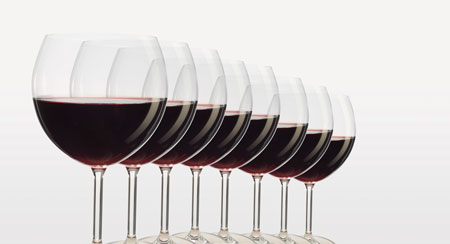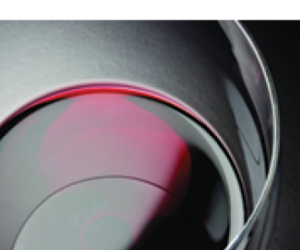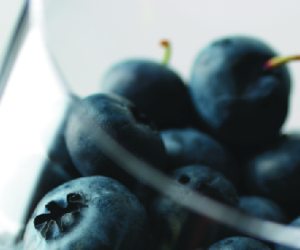
Many home winemakers are uncertain on whether or not to have their wines go through malolactic fermentation. This is not surprising since there is no “one size fits all” approach to the decision and using malolactic fermentation (MLF) depends on the type and style of wine that you are trying to make.
Malolactic fermentation has a big effect on the flavor and stability of a wine and therefore it is important to fully understand how it works and what it does so you can make the correct winemaking decision in your cellar.
What is Malolactic Fermentation (MLF)?
Like the alcoholic fermentation done by yeast that converts grape juice into wine, malolactic fermentation is also accomplished by the action of microbes. Yeast are a type of unicellular fungi that consume sugar and produce alcohol and carbon dioxide (CO2). Malolactic fermentation is carried out by malolactic bacteria that consume the malic acid in wine and produce lactic acid and CO2. Lactic acid is the type of acid that is also found in milk. Alcoholic fermentation begins before malolactic fermentation and is usually finished first so it is also called primary fermentation and MLF is often referred to as secondary fermentation.
Acids Found in Wine
Grape juice is very tart primarily due to the presence of tartaric acid and malic acid, which account for over 90% of the natural acidity that is found in wine. Malic acid is found in many types of fruit while tartaric acid is found only in grapes and a few other fruits. Tartaric acid will react with the potassium in grape juice and wine to form potassium bitartrate, also called cream of tartar, that can form crystals on the sides of containers that are being used for storage. While tartaric acid can react with potassium, it cannot be metabolized by yeast or bacteria, so it is microbially stable. Malic acid by comparison can be used as an energy source by malolactic bacteria during MLF so it is not microbially stable in wine.
Malolactic Bacteria
There are many types of bacteria that can grow in wine, but fortunately for us none are human pathogens. Malolactic are the most common bacteria found in wine and there are several different types, some more suited to winemaking than others. Strains of Oenococcus oeni are the preferred species to be used for malolactic fermentation; it ferments relatively quickly and does not produce off flavors. Pediococcus and Lactobacillus can also carry out malolactic fermentation but produce off flavors so they are considered spoilage bacteria.
Malolactic bacteria are fastidious microbes that often cause headaches for winemakers. Conditions must be just right for them to grow and often when they do, they ferment slowly. Malolactic bacteria require many nutrients and usually do best in young wines that have not been settled or filtered and are still a little cloudy. They also grow best in low acid/high pH conditions and warm temperatures. Remember pH is an inverse measure of acidity so a low pH wine has more acid than a high pH wine. Frequently when the cellar cools down during the winter months, the malolactic fermentation will suspend until things warm up again in the spring. Most importantly, malolactic bacteria are very sensitive to sulfur dioxide and will not grow if there is significant free SO2.
When compared to the primary fermentation performed by yeast, malolactic fermentation is not nearly as dramatic. When malolactic fermentation is underway, the wine will take on a spritzy character from the evolution of CO2 gas and will also have a slight pearlescent sheen. Yeast produce a great deal of CO2 making it obvious that fermentation is taking place, just as when the bubbling of CO2 stops and the juice no longer tastes sweet it is apparent that primary fermentation has finished. By contrast malolactic bacteria grow much more slowly than yeast and do not produce nearly as much CO2 making it less evident that malolactic fermentation is taking place. This has fooled many novice winemakers into thinking that malolactic fermentation is complete when it is not and they bottle the wine only to have it spoil when MLF begins again in the bottle. For this reason it is always a good idea to test the wine before bottling to insure MLF is complete. Malolactic fermentation is considered finished if the level of malic acid is less than 0.25 grams/liter (g/L) or there is an absence of a malic spot on a paper chromatogram. (I speak from experience on this, my first wine, a 1981 Cabernet Sauvignon fermented in a dorm room closet, tasted great when I bottled it in the spring, but when things warmed up in the summer it started popping corks!)
Effects of MLF
The most important effect of malolactic fermentation is deacidification. Since lactic acid is less acidic than malic acid, a wine that has had its malic acid replaced with lactic acid by MLF will be noticeably less tart. The amount of the shift in acidity depends of the ratio of malic acid to tartaric acid in the must or juice. Grapes grown in cool regions have a higher ratio of malic to tartaric acid and the shift in acidity will be greater than that of grapes grown in warm regions.
This change of acidity affects the flavor, stability and ageability of the wine. Less acidity means that the wine will taste softer and less crisp after malolactic fermentation. A wine that has gone though malolactic fermentation will also be a little less fruity in character and slightly more complex.
Malolactic bacteria also produce the compound diacetyl which has a buttery odor and particularly white wines that have gone through MLF will take on a buttery aroma.
Since all wine microbes (including spoilage ones) grow better in low acid conditions, malolactic fermentation can make a wine more prone to attack from spoilage microbes. The ageability of a wine is also influenced by its acidity and a wine with high acid will be more ageable than a similar wine with low acid. It is easy, however, for a winemaker to compensate for these effects on stability and ageability by adjusting the wine with tartaric acid when the MLF is complete.
Although the lower acid of a wine after malolactic fermentation can make it more susceptible to spoilage microbes, it does make the wine immune to the risk of malolactic fermentation after the wine is bottled. Many home winemakers prefer to have their wines go though MLF in the cellar just so they do not have to go to the trouble of sterile filtering the wine or worrying about malolactic fermentation taking place after bottling.
Which Wines Will Benefit?
When deciding on whether or not to put your wine through malolactic fermentation, you need to think about what it will do to the wine’s flavor and stability. Most reds and some whites benefit from malolactic fermentation depending on the style that you are trying to make. Since the primary effect of MLF is the lowering of acidity, it is more useful in wines that are a little too tart than in low acid wines that already do not have enough acid.
For red wines, many winemakers opt for malolactic fermentation even if their wines are not high in acid because they feel it is easier to let it go through and be finished than trying to prevent it during the many months that the wine undergoes barrel aging. Another advantage of this is since malolactic fermentation after bottling would not be a concern, you do not need to sterile filter the wine or add preservatives to prevent malolactic bacteria growth. However in hot growing regions where the grapes come in with very low natural acidity it is more common to avoid MLF with reds.
White wines that have a flavor profile that is based on lots of fruity and floral character and crisp acidity have little to gain from malolactic fermentation. These include wines such as Riesling, Gewürztraminer, Pinot Gris, Sauvignon Blanc and Muscat. Often this style of wine is finished with a little residual sugar so they would have to be sterile filtered anyway to prevent alcoholic fermentation in the bottle.
Malolactic fermentation is more appropriate for Chardonnays; adding body and lowering acid giving them a more rich and creamy character. The buttery flavors produced by MLF are also more complementary to Chardonnay, especially if they are fermented in oak.
Malolactic fermentation can give you options to control the flavor of the wine that you are making. Many Chardonnays are now being produced without being aged on wood or undergoing malolactic fermentation. This method makes a refreshing wine that is lean and tart and allows the delicate fruit flavors of the variety to shine through. This also allows you to add some diversity to your winemaking; if you are making two carboys worth of Chardonnay from the same grapes, why not have one go through malolactic fermentation with some French oak and on the other skip oak and MLF? This is a simple way to add some variety to your production.
For wines that are made from kits or concentrate rather than grapes, it is best to follow the directions. Kit wines are usually designed to be fermented, bottled and consumed quickly so there isn’t the time for a slow MLF. Moreover juice from kits often has been adjusted, so MLF would be difficult or even detrimental.
The key is to decide if your wine would taste better if it goes though malolactic fermentation or better if it does not. If you think that your wine would be improved, take active steps to see that your wine has a successful malolactic fermentation. Conversely if you conclude that the style of wine that you are making would be better without MLF, then you should take precautions to prevent it from happening.
Promoting MLF
To begin malolactic fermentation, you must add malolactic bacteria to the wine. This can be done in several ways. The simplest and the most successful method is usually to add a commercially prepared malolactic bacteria culture to the wine. Unfortunately this is usually the most expensive method as well costing about $7.00 to $12.00 to inoculate a 5 gallon (19 L) carboy of wine. Using a store bought culture will give you the best chance for success and the quickest fermentation. Be sure to follow the manufacturer’s recommendations exactly to get the best results. You can use less than the recommended dosage, but the fermentation will proceed more slowly.
Malolactic bacteria will remain in the surface of the wood of a used barrel after it has been emptied and cleaned so you can also inoculate with malolactic bacteria by racking the wine into a barrel that has previously stored a wine undergoing MLF. Another technique for winemakers on a budget is to cross inoculate from one wine to another. This is done by taking a little bit of wine from a container that is in the middle of MLF and adding it to another lot of wine. When cross inoculating, add about 5 to 10% of the volume of the wine that you are inoculating. Be sure that the wine that is being added is without defects and right in the middle of MLF. This method can be successful, but carries a greater risk of spoilage.
For the bacteria to perform a successful malolactic fermentation, the conditions in the wine must be conducive to their growth. The bacteria do best in unclarified wine with lots of nutrients, low acid, low alcohol, and no SO2. While they can ferment under more harsh circumstances they often will ferment very slowly and sometimes will not be able to finish MLF.
When to Inoculate
Generally speaking, the earlier that malolactic bacteria get started, the better the chance for success. Most winemakers add their culture immediately after primary fermentation is complete. Some winemakers (myself included) like to add malolactic bacteria midway through primary fermentation or for red wines just after they have been pressed. At this time the juice/wine is usually at its warmest and still has plenty of nutrients. Some winemakers do not like to add the culture during primary fermentation because they feel the malolactic bacteria would compete with the yeast, however recent studies have shown this not to be a concern. If possible it is best to complete MLF before the first winter after harvest. This way you can add a little tartaric acid after MLF if it is needed and then allow your wine to cold stabilize during the winter months.
Preventing MLF
If you decide that your wine would be better without malolactic fermentation, you need to take steps to make sure that it does not take place. Wine cellars have lots of native yeast and bacteria living in them and it is possible for these “wild” bacteria to start a spontaneous fermentation in your wine. The first step to avoid this is to keep a clean cellar and clean cooperage so MLF bacteria do not have a place to grow. Along with this keeping the free sulfur high (>0.5 ppm molecular) and the pH low will keep the malolactic bacteria from growing.
While the wine is in the cellar, it is easy to control malolactic fermentation by keeping an eye open for the telltale signs of fermentation such as pressure when you remove a bung or stoppers popping out of carboys. If the wine is dry but has not gone through MLF, the gas is most likely from the growth of malolactic bacteria. If this is the case, adjusting the SO2 a little higher on the wine will usually stop the bacteria cold.
Just adding more sulfur is not an option for wine that is already bottled, so you must take extra measures to prevent MLF before bottling takes place. Adding sulfur works well, but free SO2 will slowly decline during bottle aging and if there is any viable malolactic bacteria in the wine it could start to grow when it gets to a low enough level. If you have the resources to do it, sterile filtration works best. If sterile filtration is not an option, bottling with significant SO2, adding 0.04% fumaric acid, and then storing the bottles in a cool place should prevent growth. This may not preserve your wine forever, but if you are making a wine with a fruit-forward flavor profile it is best to drink it while it is young anyway.
MLF Gives You Options
While we have discussed which varieties malolactic fermentation generally works best with, do not feel that you limited to these choices. Feel free to try things differently if you think that it will improve the style of wine that you are trying to make. The key is to understand how it will affect your wine and if you want to do MLF, take the actions necessary for a successful fermentation. If you do not want MLF, do what is needed to prevent it. In either case, always be sure that it is finished before bottling or that you take steps to prevent it from taking place. Ultimately knowing how to work with MLF gives you another tool to control the flavor of your wine.




